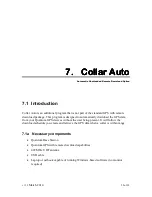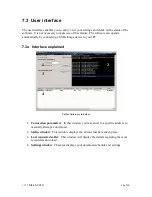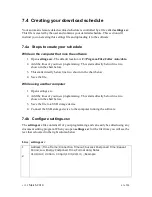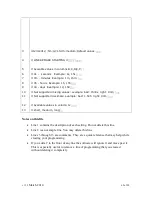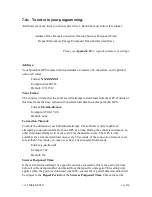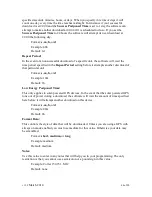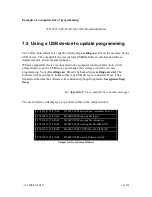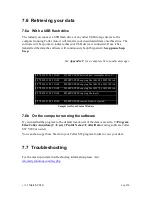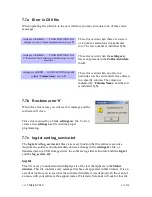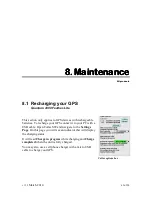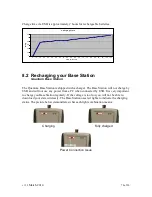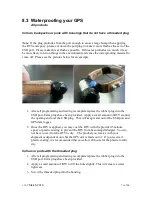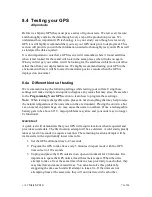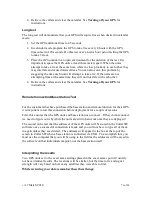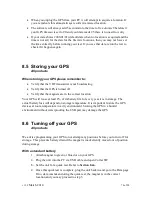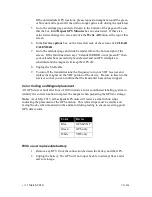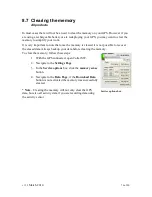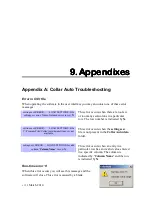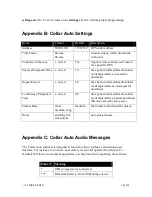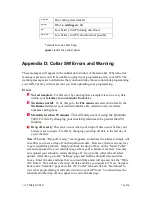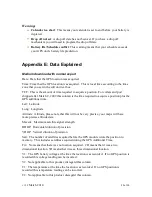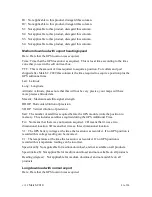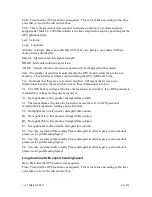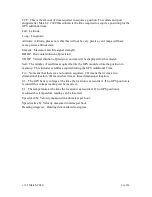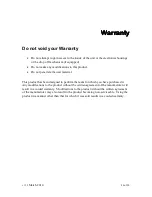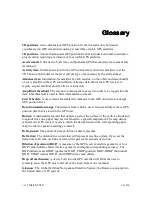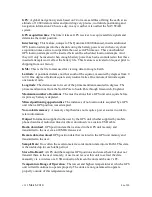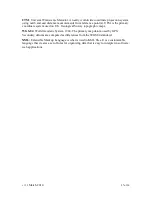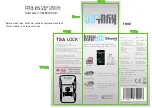
v1.32
March 2014
72 of 90
8.4 Testing your GPS
All products
Before we ship any GPS they must pass a series of rigorous tests. We test every feature
and thoroughly examine the data through every step of the production process. We
understand how important GPS technology is to your study; even though we test every
GPS it is still highly recommend that you test your GPS units prior to deployment. This
section will provide you with the information needed to thoroughly test your GPS as well
as interpret the data acquired.
It is also important to note that a GPS receiver will remember where it found satellites
when it last looked for them and will look in the same places when it turns on again.
When you first get your collar, it will be looking for the satellites visible from our office
rather than from your deployment area. We highly recommend testing your GPS in the
environment where it will be located to maximize positive results when the GPS is
deployed on an animal.
8.4a Different kinds of testing
We recommend using the following settings while testing your collars. Using these
settings will make it simple and quick to diagnose any issues that may arise. Please refer
to the
Programming Your GPS
section to learn how to program these settings.
Note:
When testing rechargeable units, please do not do anything that may help to raise
the natural temperature of the units when in the environment. Placing the units in a hot
car, on metal, in plastic bags, etc, may cause the units to overheat. Once a rechargeable
battery gets to be above 60° C, major problems may arise and your units may no longer
be functional.
Quick test
A quick test will demonstrate that your GPS will acquire locations when requested and
provide accurate data. The first location attempt will be a cold start. A cold start typically
takes at least 40 seconds to acquire a location. The remaining location attempts will be
warm starts with a significantly lower time to fix.
1.
Set the GPS additional time to 45 seconds.
2.
Program the GPS to take fixes every 5 minutes in repeat mode with the GPS
timeout set to 120 seconds.
3.
Unplug and place the GPS outside in an open environment for 20 minutes. It is
important to space the GPS units at least three meters apart. When the units
attempt to take a fix at the same time while in close proximity to each other, they
may interfere and cause missed fixes. You can also solve this problem by
staggering the time each unit will attempt to take a fix. If the units are not
attempting fixes at the same time they will not interfere with each other.
Summary of Contents for 4000 Enhanced
Page 90: ...v1 32 March 2014 90 of 90...

